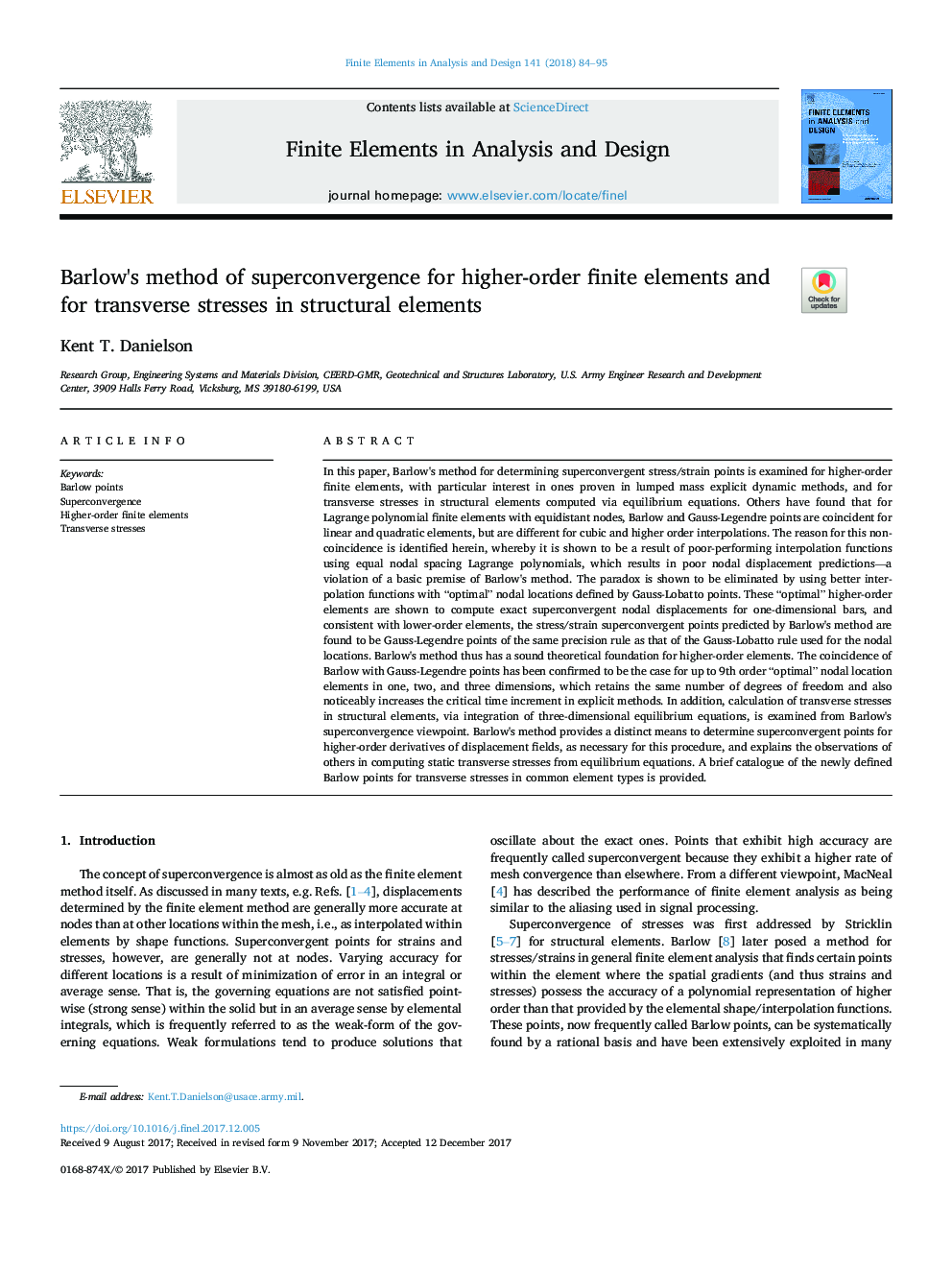| کد مقاله | کد نشریه | سال انتشار | مقاله انگلیسی | نسخه تمام متن |
|---|---|---|---|---|
| 6925440 | 1448758 | 2018 | 12 صفحه PDF | دانلود رایگان |
عنوان انگلیسی مقاله ISI
Barlow's method of superconvergence for higher-order finite elements and for transverse stresses in structural elements
دانلود مقاله + سفارش ترجمه
دانلود مقاله ISI انگلیسی
رایگان برای ایرانیان
موضوعات مرتبط
مهندسی و علوم پایه
مهندسی کامپیوتر
نرم افزارهای علوم کامپیوتر
پیش نمایش صفحه اول مقاله

چکیده انگلیسی
In this paper, Barlow's method for determining superconvergent stress/strain points is examined for higher-order finite elements, with particular interest in ones proven in lumped mass explicit dynamic methods, and for transverse stresses in structural elements computed via equilibrium equations. Others have found that for Lagrange polynomial finite elements with equidistant nodes, Barlow and Gauss-Legendre points are coincident for linear and quadratic elements, but are different for cubic and higher order interpolations. The reason for this non-coincidence is identified herein, whereby it is shown to be a result of poor-performing interpolation functions using equal nodal spacing Lagrange polynomials, which results in poor nodal displacement predictions-a violation of a basic premise of Barlow's method. The paradox is shown to be eliminated by using better interpolation functions with “optimal” nodal locations defined by Gauss-Lobatto points. These “optimal” higher-order elements are shown to compute exact superconvergent nodal displacements for one-dimensional bars, and consistent with lower-order elements, the stress/strain superconvergent points predicted by Barlow's method are found to be Gauss-Legendre points of the same precision rule as that of the Gauss-Lobatto rule used for the nodal locations. Barlow's method thus has a sound theoretical foundation for higher-order elements. The coincidence of Barlow with Gauss-Legendre points has been confirmed to be the case for up to 9th order “optimal” nodal location elements in one, two, and three dimensions, which retains the same number of degrees of freedom and also noticeably increases the critical time increment in explicit methods. In addition, calculation of transverse stresses in structural elements, via integration of three-dimensional equilibrium equations, is examined from Barlow's superconvergence viewpoint. Barlow's method provides a distinct means to determine superconvergent points for higher-order derivatives of displacement fields, as necessary for this procedure, and explains the observations of others in computing static transverse stresses from equilibrium equations. A brief catalogue of the newly defined Barlow points for transverse stresses in common element types is provided.
ناشر
Database: Elsevier - ScienceDirect (ساینس دایرکت)
Journal: Finite Elements in Analysis and Design - Volume 141, March 2018, Pages 84-95
Journal: Finite Elements in Analysis and Design - Volume 141, March 2018, Pages 84-95
نویسندگان
Kent T. Danielson,